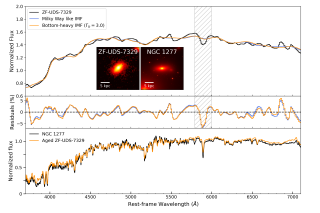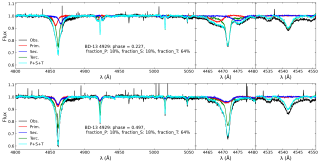The quiet Sun (the 99%, or more, of the solar surface not covered by sunspots or active regions) is receiving increased attention in recent years; its role on the global magnetism and its complexity are being increasingly recognised. A picture of a rather stochastic quiet Sun magnetism is emerging . From these recent works, the quiet Sun magnetism is presented as a myriad of magnetic field vectors having an isotropical distribution with a cascade of scales down to the mean free path of the photon (1 marcsec, or 10km on the solar surface). But this chaotic representation also shows clear signs of intermittency: at a low frequency rate (0.022 events h-1 arcsec-2) the magnetic field appear in the quiet Sun forming well-organised loop structures at granular scales. Right figure shows an example of such small-scale loop (1 arcsec, or 1000 km on the solar surface). We cas see as it is formed by a myriad of nested field lines forming a spartial (and temporal) coherent structure. More interesting, these loops rise to higher layers (see left figure) and their energy input into the chromosphere can be important for the heating of this layer.
Advertised on
References
(2010)The Astrophysical Journal Letters, Volume 714, Issue 2, pp. L94-97
It may interest you
-
 It’s been decades since the need to study other stars to understand the past, present and future of the Sun was realized. One important aspect that has been investigated is the magnetic activity of stars for which we cannot fully grasp the mechanisms involved. Indeed, the origin of stellar magnetic cycles or the dependence of the magnetic activity on the stellar properties are not completely understood. This knowledge improves not only our understanding of the physics involved in stellar evolution but also affects the study of the Sun to better predict high-energy events and the betterAdvertised on
It’s been decades since the need to study other stars to understand the past, present and future of the Sun was realized. One important aspect that has been investigated is the magnetic activity of stars for which we cannot fully grasp the mechanisms involved. Indeed, the origin of stellar magnetic cycles or the dependence of the magnetic activity on the stellar properties are not completely understood. This knowledge improves not only our understanding of the physics involved in stellar evolution but also affects the study of the Sun to better predict high-energy events and the betterAdvertised on -
 Observations made with the James Webb Space Telescope (JWST) have revealed a larger-than-expected number of massive galaxies when the Universe was still young. The focus of this study is precisely one of these galaxies, ZF-UDS-7329. It is a very compact object, and its spectrum suggests that it formed at a very early stage, when the Universe was around 2 billion years old. According to theoretical predictions, these objects first formed a generation of stars at the center of their dark matter halos and subsequently grew by merging with other halos. However, due to the random nature of theseAdvertised on
Observations made with the James Webb Space Telescope (JWST) have revealed a larger-than-expected number of massive galaxies when the Universe was still young. The focus of this study is precisely one of these galaxies, ZF-UDS-7329. It is a very compact object, and its spectrum suggests that it formed at a very early stage, when the Universe was around 2 billion years old. According to theoretical predictions, these objects first formed a generation of stars at the center of their dark matter halos and subsequently grew by merging with other halos. However, due to the random nature of theseAdvertised on -
 The most massive stars in the universe are often born and evolve in binary and multiple systems — that is, in pairs or groups bound by their mutual gravity. Understanding how they interact with each other is key to explaining everything from their formation to the impact they have on the galaxies they inhabit. The MONOS project (Multiplicity Of Northern O-type Spectroscopic systems) aims to study these systems in the northern sky, combining spectroscopic observations (which analyze light split into its component colors to measure stellar velocities and physical properties) with photometryAdvertised on
The most massive stars in the universe are often born and evolve in binary and multiple systems — that is, in pairs or groups bound by their mutual gravity. Understanding how they interact with each other is key to explaining everything from their formation to the impact they have on the galaxies they inhabit. The MONOS project (Multiplicity Of Northern O-type Spectroscopic systems) aims to study these systems in the northern sky, combining spectroscopic observations (which analyze light split into its component colors to measure stellar velocities and physical properties) with photometryAdvertised on